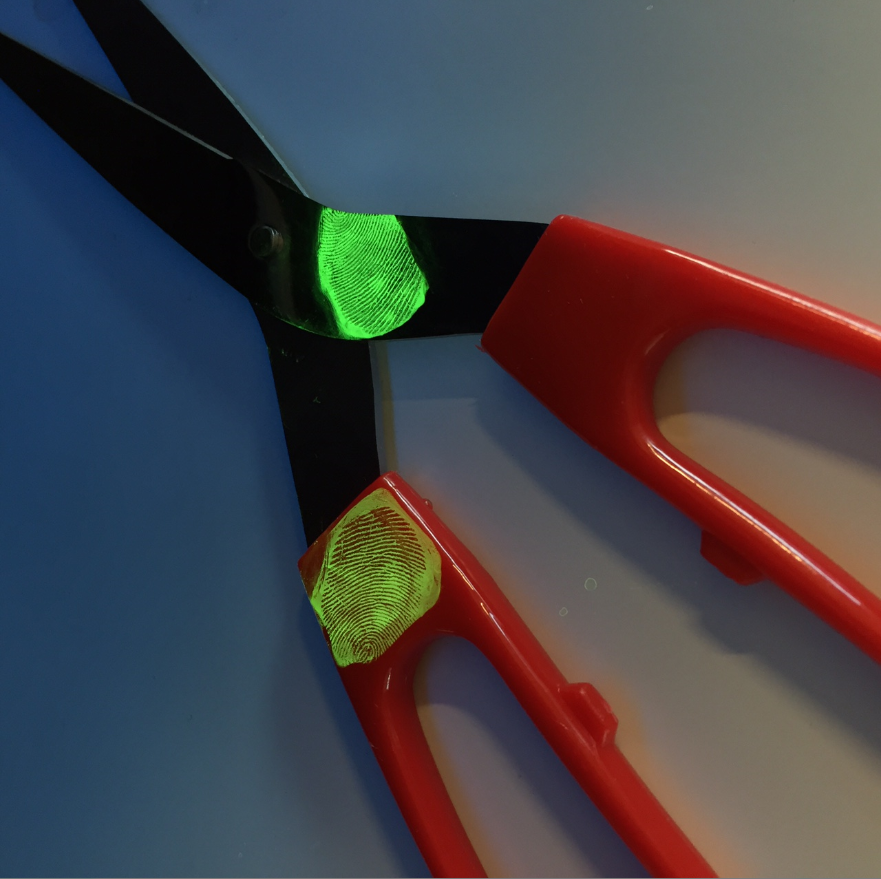Future Cops May Track Down Criminals By Making Fingerprints Glow
One scientist’s revenge could be the ultimate crime-fighting tool
When you imagine someone collecting fingerprints, you probably think of an investigator brushing fine dust around the crime scene. But this outdated method could soon get an upgrade. An Australian scientist has figured out how to make fingerprints glow—even on tricky surfaces.
The method involves applying a drop of liquid containing luminescent crystals to surfaces covered with fingerprints. The crystals bind to the prints’ protein and peptide residues and are detectable by a UV light within 30 seconds, according to the results recently published in the journal Advanced Materials.
“Because it works at a molecular level it’s very precise and lowers the risk of damaging the print,” says lead author Kang Liang in a press release. Eventually digital devices could detect and record the fingerprints, eliminating the need for dusting, he says in the release.

This research all began when Buglers broke into Liang's house. When the police arrived, they couldn't find fingerprints anywhere, writes Marcus Strom for The Sydney Morning Herald. After the police left, Liang began searching for a better way to track the criminals.
Though it began as one scientist’s revenge, this new method has the potential to improve a forensic technique that’s been around for centuries. People have been using fingerprints to identify individuals since the 1880s.
The technology could also go beyond mere fingerprints, potentially helping with things like drug delivery and biomedical devices, Liang says in the release.
For now, Liang and his team hope to work with law enforcement agencies to give an old technique a much needed overhaul.
(h/t Phys.org)
/https://tf-cmsv2-smithsonianmag-media.s3.amazonaws.com/accounts/headshot/erin.png)
/https://tf-cmsv2-smithsonianmag-media.s3.amazonaws.com/accounts/headshot/erin.png)